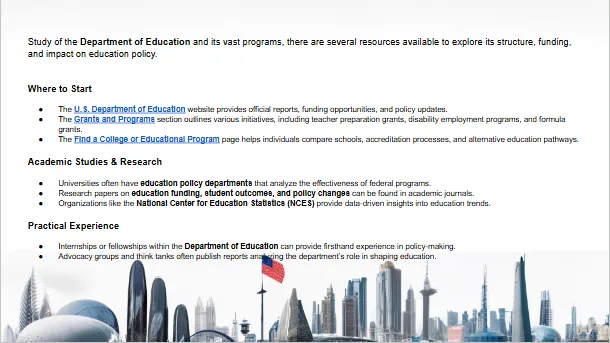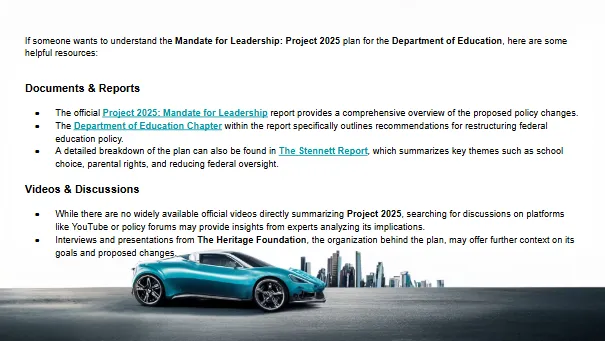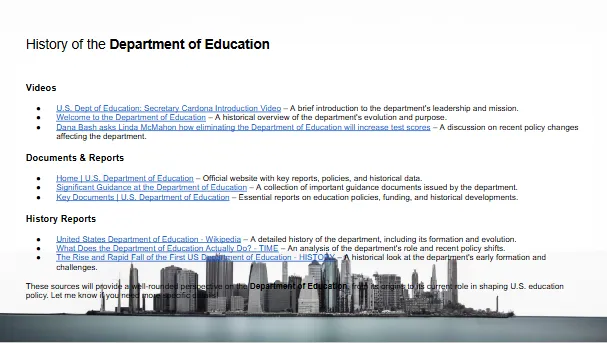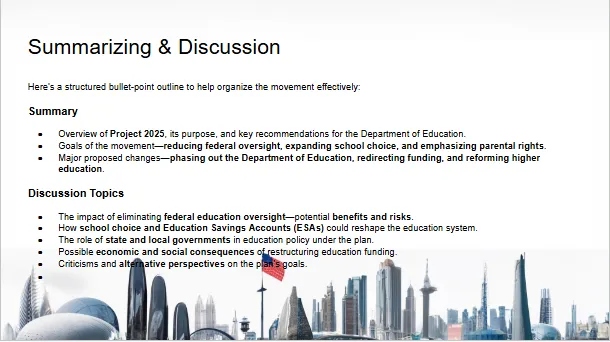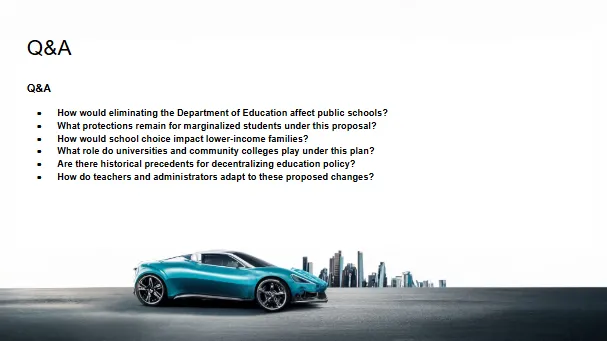UNDERSTANDING THE CONSERVATIVE PROMISE: MANDATE FOR LEADERSHIP
Project 2025 Watch
EXECUTIVE BRANCH
VS
CONSTITUTION
Chapter 20:
GENERAL WELFARE
VETERAN AFFAIRS
Review
Reading Mandate with Summary
Policy Brief
Reforming Veterans Affairs: A Conservative Vision – Implications for Service Members, Systems, and Society
Source: Mandate for Leadership: The Conservative Promise (2025 Edition)
Prepared by: 4DEMOCRACY COMPOSED BY E MILLIONS WILLIAMS Date: April 2025
Overview
This brief outlines proposed reforms to the Department of Veterans Affairs (VA) as detailed in The Conservative Promise. The vision aims to modernize the VA through privatization, automation, workforce restructuring, and political realignment. It has significant implications for veterans' access to services, internal advocacy, and broader societal outcomes.
✅ Core Benefits and Services Outlined
The proposed framework emphasizes continuity and enhancement of core veteran services:
Healthcare Access:
VA Medical Centers, Community-Based Outpatient Clinics (CBOCs), expanded Community Care Networks under the MISSION Act.
Compensation & Support:
Disability compensation reform, including an “Express 30” pilot.
GI Bill, vocational rehabilitation, tuition assistance.
Family Caregiver Program for long-term support.
Service Innovations:
Expansion of telehealth and broadband.
Public performance reporting (wait times, care quality).
Facility-sharing with local healthcare systems.
Digital modernization: EHR and claims automation.
Proposed Veterans Bill of Rights.
🇺🇸 Impact on Service Members and Veterans
Positive Effects:
More provider options via Community Care.
Potentially faster claims with automation and new pilots.
Recruitment incentives could address rural staffing shortages.
Negative Effects & Risks:
Unequal access to Community Care; often withheld unless requested.
Continued delays in claims and care due to staffing and infrastructure gaps.
Potential erosion of benefits if disability rating reforms reduce eligibility.
Mental health care imbalances may worsen disparities.
Growing concern about political agendas overtaking veteran service priorities.
🔐 Safe Internal Actions for Service Members and Veterans
Service members and veterans can advocate for their care and rights without risking retaliation by:
Requesting Community Care directly and demanding clear eligibility documentation.
Documenting delays and interactions for transparency.
Filing complaints or feedback via the VA Inspector General, patient advocates, and surveys.
Using legal aid and appeals processes when claims are denied or mishandled.
Engaging with VSOs to advocate collectively and access resources.
Exploring telehealth options and requesting care at more convenient times.
Tracking caregiver program eligibility and appealing inconsistencies.
🌍 Societal Implications
Budget & Infrastructure Strain: Expanded benefits without parallel staffing or capacity increases may worsen inefficiencies.
Healthcare System Stress: Greater reliance on non-VA providers could burden local systems.
Veteran Equity Concerns: Unequal information access risks increasing disparities by geography or demographic.
Political Fractures:
Controversial reforms (e.g., abortion, gender care) may polarize public and legislative support.
Cultural Shift: Emphasis on automation and political loyalty may erode VA’s traditional public-service ethos.
Public Trust Indicator: The VA’s performance is a bellwether for broader confidence in federal service delivery.
Key Considerations for Policymakers and Advocates
Ensure transparency and accountability in Community Care access and disability adjudication.
Protect and enhance mental health services, especially in underserved regions.
Balance efficiency with equity in automation and claims reforms.
Guard against politicization of essential services that should remain nonpartisan.
Invest in workforce retention and support, especially given rising veteran needs and aging infrastructure.
📌 Conclusion
The VA reforms proposed in Mandate for Leadership represent a significant ideological and structural shift.
While aiming to improve service speed and responsiveness, these policies carry risks of inequity, cultural disruption, and trust erosion.
Stakeholders must closely monitor implementation, advocate for veteran-centered protections, and push for transparency in outcomes.
Benefits and Services Highlighted in the Text
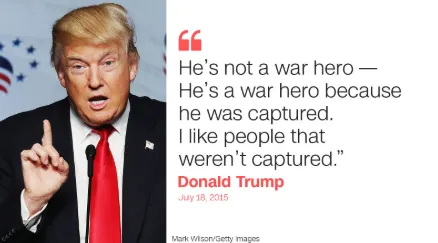
🔐 What Service Members Can Do Internally (Safely)
Without risking retaliation, service members and veterans can:
Ask Direct Questions:
About Community Care, expedited claims, and scheduling alternatives.
Document Everything:
Wait times, care delays, claim communications.
Use Official Channels:
Patient advocates, VA Inspector General, appeals processes.
Engage with VSOs:
For policy advocacy and legal aid.
Stay Informed:
Follow policy updates, performance metrics, and care options online.
Report Issues:
Especially related to improper payments or caregiver program inconsistencies.
✅ Benefits and Services Highlighted
The chapter outlines a wide range of veteran services, both existing and proposed enhancements:
Health Care Access: Through VA Medical Centers, Community-Based Outpatient Clinics (CBOCs), and expanded Community Care under the MISSION Act.
Disability Compensation: Largest VA benefit, with proposed reforms to processing and eligilibility.
Education Benefits: GI Bill, vocational rehab, and tuition assistance.
Housing & Life Services: Home loan guarantees, insurance, memorial services.
Innovations:
Telehealth and broadband expansion.
“Express 30” disability claims pilot.
Public performance metrics and scheduling reforms.
Facility-sharing with local health systems.
Veterans Bill of Rights (proposed, not implemented).
🇺🇸 How Service Members and Veterans Are Affected
Veterans may experience both gains and challenges from proposed changes:
Improvements:
More care options via private-sector providers.
Faster claims (if automation and pilots succeed).
Recruitment of more medical staff, especially in rural areas.
Challenges:
Inconsistent access to Community Care; often not disclosed unless requested.
Delays in care and claims due to workforce shortages and poor scheduling.
Risk of benefit erosion, especially with VASRD reviews and privatized disability exams.
Mental health gaps and geographic disparities in services.
Perceived politicization of services (abortion access, cultural issues).
🌍 Broader Societal Impacts
The proposed reforms could reshape the veteran support ecosystem, with wider effects:
System Strain:
Expanding benefits without proportional infrastructure risks delays and overload.
Public-Private Tensions:
Community Care and facility-sharing may strain local hospitals.
Political Polarization:
Debates on abortion, gender care, and privatization may fracture support.
Cultural Shift:
Move toward efficiency and cost-control could erode public-service orientation.
Workforce Pressures:
Over 400,000 VA employees face burnout and retention challenges.
Government Trust Signal:
How the VA treats veterans influences national trust in federal services.
The Pros/Cons of the Reform Proposal's
✅ Top 10 Best Perceived Reforms (by Veterans & Civilians)
1. Expanded Telehealth and Broadband for Rural Access
Why it’s valued: Increases access to care for underserved and remote veterans; reduces the need for travel and long wait times.
2. Targeted Mental Health Workforce Expansion
Why it’s valued: A balanced approach to hiring psychologists, therapists, and counselors meets critical mental health needs—especially post-service.
3. Hiring Veterans and Military Spouses
Why it’s valued: Reinforces the VA’s identity as a veteran-focused institution and builds trust by hiring people who understand military culture.
4. Tuition Assistance in Exchange for Rural Service
Why it’s valued: Helps fill care gaps in rural areas while making education more accessible to health professionals.
5. Faster Claims Processing Pilot (30-Day Express Lane)
Why it’s valued: Reduces red tape and backlogs—top complaints from veterans navigating the VA claims system.
6. Improved Hiring Incentives through the RAISE and PACT Acts
Why it’s valued: Makes VA jobs more competitive, especially for IT and cybersecurity roles, improving service quality and innovation.
7. Modernization of the Human Resources IT System
Why it’s valued: Better personnel management helps retain qualified staff and reduce service delays.
8. Mission-Driven Workplace Culture
Why it’s valued: A focus on respect, loyalty, and responsiveness resonates with veterans who want dignity and efficiency.
9. Increased Use of Commercial Tech Tools to Cut Inefficiencies
Why it’s valued: Brings innovation into benefit processing, helping to reduce human error and speed up turnaround.
10. EHR (Electronic Health Record) Reassessment
Why it’s valued: Acknowledges safety issues and cost concerns while committing to necessary improvements.
⚠️ Top 10 Worst Perceived Reforms (by Veterans & Civilians)
1. Eliminating the Office of Accountability and Whistleblower Protection (OAWP)
Why it’s concerning: Reduces oversight and protections for whistleblowers, making it harder to expose abuse or mismanagement.
2. Overemphasis on Political Control Over VA Leadership
Why it’s concerning: Could politicize health and benefits decisions, weakening the VA’s trust and nonpartisan service to veterans.
3. Undermining Remote and Hybrid Work
Why it’s concerning: Veterans and civilians may perceive this as regressive and out of step with workplace norms, possibly affecting staff retention.
4. Disability Ratings Review with Cost-Cutting Intent
Why it’s concerning: Any review framed around reducing expenses may spark fear among veterans that their benefits could be reduced or denied.
5. Outsourcing More Exams and Claims Reviews
Why it’s concerning: Raises concerns about quality, consistency, and accountability when for-profit contractors handle sensitive veteran evaluations.
6. Labor Reform Agenda Without Worker Buy-in
Why it’s concerning: Tensions with unions and employees may lower morale, hurt retention, and delay reforms meant to improve service delivery.
7. Perceived Hostility Toward Civil Service Protections
Why it’s concerning: May alienate career professionals and increase turnover, affecting continuity of care and operations.
8. Lack of Clarity on Community Care Oversight
Why it’s concerning: Expanding private care access without guardrails risks fragmentation and uneven care standards for veterans.
9. Diminishing Veteran Employment Rates at the VA
Why it’s concerning: Reflects declining alignment between the VA and the community it serves, eroding trust and credibility.
10. Combining Unrelated Agencies (e.g., HRA + Security & Preparedness)
Why it’s concerning: Merging unrelated functions may weaken effectiveness and confuse organizational priorities.
🧭 Final Takeaway
Veterans tend to support changes that increase access, reduce delays, protect benefits, and ensure dignity.
Civilians (especially VA employees) value organizational stability, meaningful reforms, and accountability structures.
The worst-received proposals are those that signal ideological rigidity, loss of safeguards, or reductions in earned benefits.
Understanding what this part of the Mandate means to you?
Access to private care is uneven: Many VAMCs reportedly do not inform veterans about their right to Community Care unless asked.
Delays in care continue due to:
Underutilized staff and infrastructure.
Scheduling inefficiencies (some VA doctors see only 6 patients/day).
Family Caregiver Program confusion: Expansion poorly managed; eligibility inconsistent.
Care quality transparency lacking: Push for public reporting of timeliness, quality, and patient satisfaction reflects concerns about internal accountability.
Older facilities and staff shortages limit service availability, especially in rural or urban areas with declining veteran populations.
🔐 What Service Members Can Do Internally (Safely)
To act within the system without backlash:
Ask directly about Community Care eligibility; insist on documentation of eligibility and referrals under the MISSION Act.
Request printed materials or digital access to VA health care options—Section 121 mandates an education program.
Log wait times and report delays using the VA Inspector General or patient advocate systems.
Push for weekend or evening appointments at facilities with known capacity issues.
Track caregiver benefits closely if enrolled in or applying for the Family Caregiver Program; document inconsistencies or denials.
Use online resources (VA.gov, MyHealtheVet) to compare local care options and facility performance when public metrics become available.
🌍 Broader Societal Impacts
Veteran health equity: Uneven access to Community Care could deepen disparities in care between urban and rural or well-informed vs. underserved veterans.
Accountability push: If successful, efforts to make VHA performance metrics public could set a new transparency standard for government-run health care.
Budget strain and infrastructure inertia: Outdated facilities and misaligned budgets create inefficiencies—without realignment, veterans may face worsening access.
Political resistance to reform: Prior failures like the AIR Commission illustrate how entrenched interests (including unions, local politicians, or bureaucracies) can delay change.
Increased pressure on local health systems: Facility-sharing pilots and Community Care expansion could both help and burden non-VA medical systems already under strain.

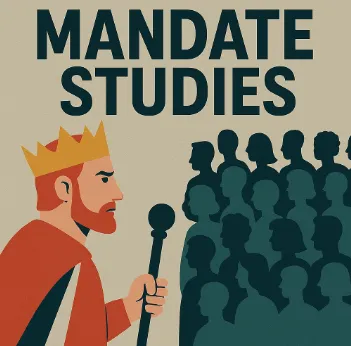
Understanding How the Mandate Effects Our Government by Sections of the Mandate
The following is a breakdown of the 900+ pages in a deeper breakdown of the authors, the standards, diagnosing the reforms, deep understanding of what our tax payer dollars provide and a deeper understanding of the deep Right. We do not have a deep Left issue, we have a issue with those who are lacking credibility with plans that are outlined in black and white. Instead of just living through the next 4 years, learn from America's Mistake for allowing nepotism to override political career morally sound individuals to decide people's fate versus those who are born of privilege. In these library of collective thoughts please feel free to join the movement...
Monitoring the Mandate by diving into the authors, contributors and current implementation of the project 2025 mandate created in 1978 first ran by Ronald Raegan with the Heritage Foundation.
Understanding the fundamentals of the Mandate by diving into the theories, philosophies and breakdowns from the section "Taking the Reins of Government" with break downs from
Understanding the fundamentals of the Mandate by diving into the theories, philosophies and breakdowns from the section "The Common Defense" with break downs from:
Understanding the fundamentals of the Mandate by diving into the theories, philosophies and breakdowns from the section "The General Welfare" with break downs from:
Understanding the fundamentals of the Mandate by diving into the theories, philosophies and breakdowns from the section "The Economy" with break downs from:
Understanding the fundamentals of the Mandate by diving into the theories, philosophies and breakdowns from the section "Independent Regulatory Agencies" with break downs from:
Understanding the fundamentals of the Mandate by diving into the theories, philosophies and breakdowns from the section "Onward" with break down and final thoughts on project 2025:
Understanding the Mandate , What it means to you and how can we grow from learning it.

Stand up for US Department of Education Against Project 2025 Mandates
The future of education is at a crossroads, and the Department of Education plays a vital role in ensuring access to quality learning opportunities for all. However, proposed policies threaten to dismantle essential programs, impacting students, teachers, and communities nationwide. By joining together, we can advocate for a strong, well-supported education system that prioritizes inclusivity, innovation, and success. Whether through raising awareness, participating in discussions, or pushing for informed policies, every effort counts in safeguarding the integrity of public education.
This is a call to action for educators, advocates, and concerned citizens to come together and make a difference. Through collective knowledge and active engagement, we can challenge harmful reforms and champion initiatives that strengthen the Department of Education. The upcoming virtual workshop on April 21-23 will provide key insights into these urgent matters, equipping participants with the tools to take action. Let’s stand for the future of education—because protecting learning today ensures a brighter tomorrow for all. Join us in this mission and help drive meaningful change!
Power Point For 3 Day Workshop 6pm-8pm April 21-23, 2025
Understanding the Mandate Which Touches the Following
The following is a breakdown of the 900+ pages in a deeper breakdown of the authors, the standards, diagnosing the reforms, deep understanding of what our tax payer dollars provide and a deeper understanding of the deep Right. We do not have a deep Left issue, we have a issue with those who are lacking credibility with plans that are outlined in black and white. Instead of just living through the next 4 years, learn from America's Mistake for allowing nepotism to override political career morally sound individuals to decide people's fate versus those who are born of privilege. In these library of collective thoughts please feel free to join the movement...
Executive overreach redefining the Constitution and it's relationship with the other branches
The Common Defense Outlining the Agency Roles
US Press
International Press
The Economy Outlines the Roles
Case for Fair Trade
Case For Free Trade
The Independent Regulatory Agencies Outlines the Roles For Agencies
The propose for this Summary is in an attempt to allow others to understand that this mission statement known as the Mandate is different than just a political movement. This movement purpose is not meant to help those who it claims to and we would argue that their Mandate has and will do damage to our world. This has been a journey of exploration, interesting, hypocritical, short sighted and often times cruel in nature.
Small Call to Action Headline
Small Call to Action Headline

Website Development
Custom Website DesignResponsive Web DevelopmentUser Experience (UX) DesignE-commerce Website DevelopmentContent Management System (CMS) Integration

Dev Development
Full-Stack DevelopmentFrontend DevelopmentBackend DevelopmentAPI Development and IntegrationDatabase Design and Management

Scrum Master Services
Agile Project ManagementScrum Master ConsultationSprint Planning and ExecutionTeam Collaboration and CoordinationContinuous Improvement Strategies

Mobile App Design
iOS App Development
Android App Development
Cross-Platform App Development
Mobile App UI/UX Design
App Maintenance and Support

Online Marketing
Search Engine Optimization (SEO)Social Media MarketingContent MarketingEmail MarketingPay-Per-Click (PPC) Advertising

Drone Services
Aerial Photography and VideographyDrone Mapping and SurveyingInspection and Monitoring ServicesGIS (Geographic Information System) IntegrationCustom Drone Software Development
“ eMillion Concepts. eMillion People. eMillion Solutions.”
© 2024 E-Millions Consulting Services - All Rights Reserved,
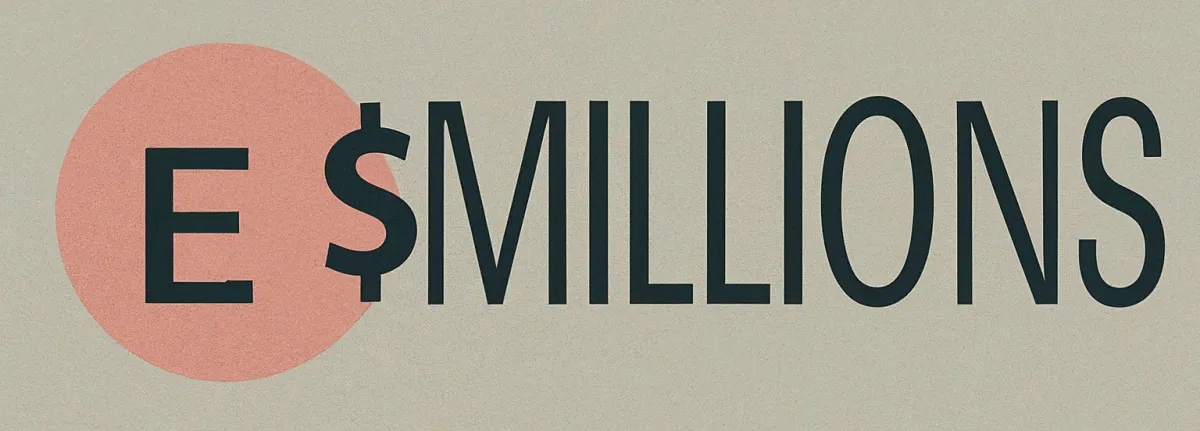
etechmilli@gmail.com
(404) 723-3940
© 2025 Company Name - All Rights Reserved, consectetur adipiscing elit. Maecenas commodo suscipit tortor, vel tristique sapien






